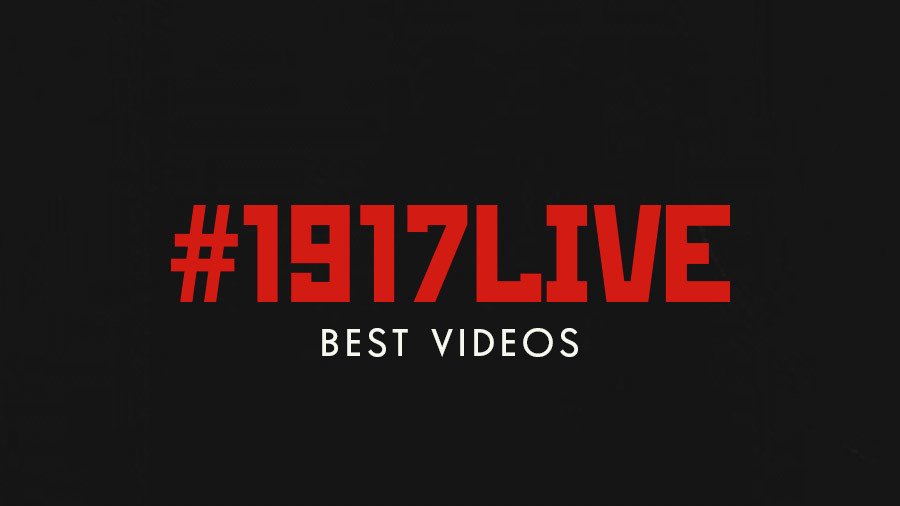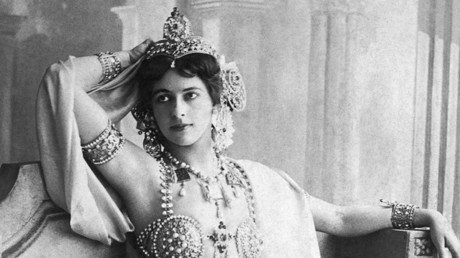#1917LIVE finale: 17 best videos

We’re reaching the end of #1917LIVE – the largest Twitter-based retelling of the Russian Revolution. We’ve picked our best of the best, so you can immerse yourself in the events through breath-taking 360 VR and archive footage.
The videos are a combination of genuine archive footage, specially-produced one-offs and mini productions using actors and VR to breathe life into the figure of Lenin and others. This was of course absolutely necessary, given the dearth of actual footage of Lenin tweeting etc.
1916. The Russian Empire is in the throes of the Great War. The economy is in ruins, countless soldiers die every day. People crave peace, and their dissatisfaction with the authorities is rising. Revolutionary sentiments are soon to engulf the country.
Battle-weary Russian soldiers call for an end to Russia’s participation in the Great War against the German Empire. Frontline losses are driving them to the precipice of rebellion.
Lenin tweets…
On March 15th Nicholas II abdicated, after which the Romanovs are taken under guard to Tsarskoe Selo. They will remain there while the Provisional Government and the Bolsheviks vie for power in Petrograd, Moscow and the empire implodes.
After years in exile, Bolshevik leader Vladimir Lenin rushes back to Russia from Switzerland to give new momentum to growing revolutionary sentiment that had toppled the Tsarist regime. Follow his journey in 69 seconds.
After the February Revolution, power is seized by the Provisional Government. However, the long-awaited changes do not materialize. The Russian Empire is still at war. The food crisis intensifies. Some leave the capital fearing the changes. Others, on the contrary, arrive in the city inspired by the new opportunities.
Maria Bochkareva - leader of the women’s Battalion of Death. Her soldiers were the first women in history to fight alongside men in an organized military capacity.
The provisional government establishes a civil police force to deal with spiralling crime amid social misery caused by the shortages. Massive strikes are commonplace as the supply of flour dwindles.
The events of 1917 engulfed the capital and spread throughout Russia. Many estates, abandoned by their previous owners, were taken over by locals. Peasants and farmers erect revolutionary slogans painted in red, musicians rehearse the L'Internationale and poems about “a newfound freedom” resound.
Stalin shaves Lenin’s beard in 360! Follow their conversation and immerse yourself in lifelike 360 VR to look around the room. Lenin adopts disguise to escape police attention. Then watch Joseph Stalin play the piano.
Lenin does a Periscope stream from his hideout after the tumultuous events of July, which had forced him to flee again.
During the February Revolution, escaped criminals attacked the prisons. They used the turmoil to release their ‘brothers in crime’, destroy archives and erase huge quantities of criminal records, undermining the incoming admin’s ability to fight crime.
July 1917. Political tensions climax. Armed militias flood Petrograd streets. Cossack patrols, specially ordered to the capital, attempt to suppress revolt.
Secret printing presses are organized in warehouses and basements across Petrograd, to spread the message of rebellion. Their work can be stopped only from the inside through high-risk undercover operations, often brutal.
Spring 1917. Vladimir Lenin returns from Europe. He calls for an immediate end to war. However, his views enrage veterans, bitter from battle, who stage protests. Society is divided, but change is coming.
Bolsheviks raid the Russian Telegraph office – the ‘virtual’ #1917LIVE newspaper that reported daily developments in Russia during the Revolution. Red Guards seize the paper and rebrand it into ‘Revolutionary Times’. Its an example of how important the press was in perpetuating and amplifying events, and capturing it was of paramount importance.
Brazilian artist Marina Amaral talks to RT about her color restoration project, which celebrates the Russian Revolution, events and people with painstaking pixel-by-pixel recreations of black and white photos.














